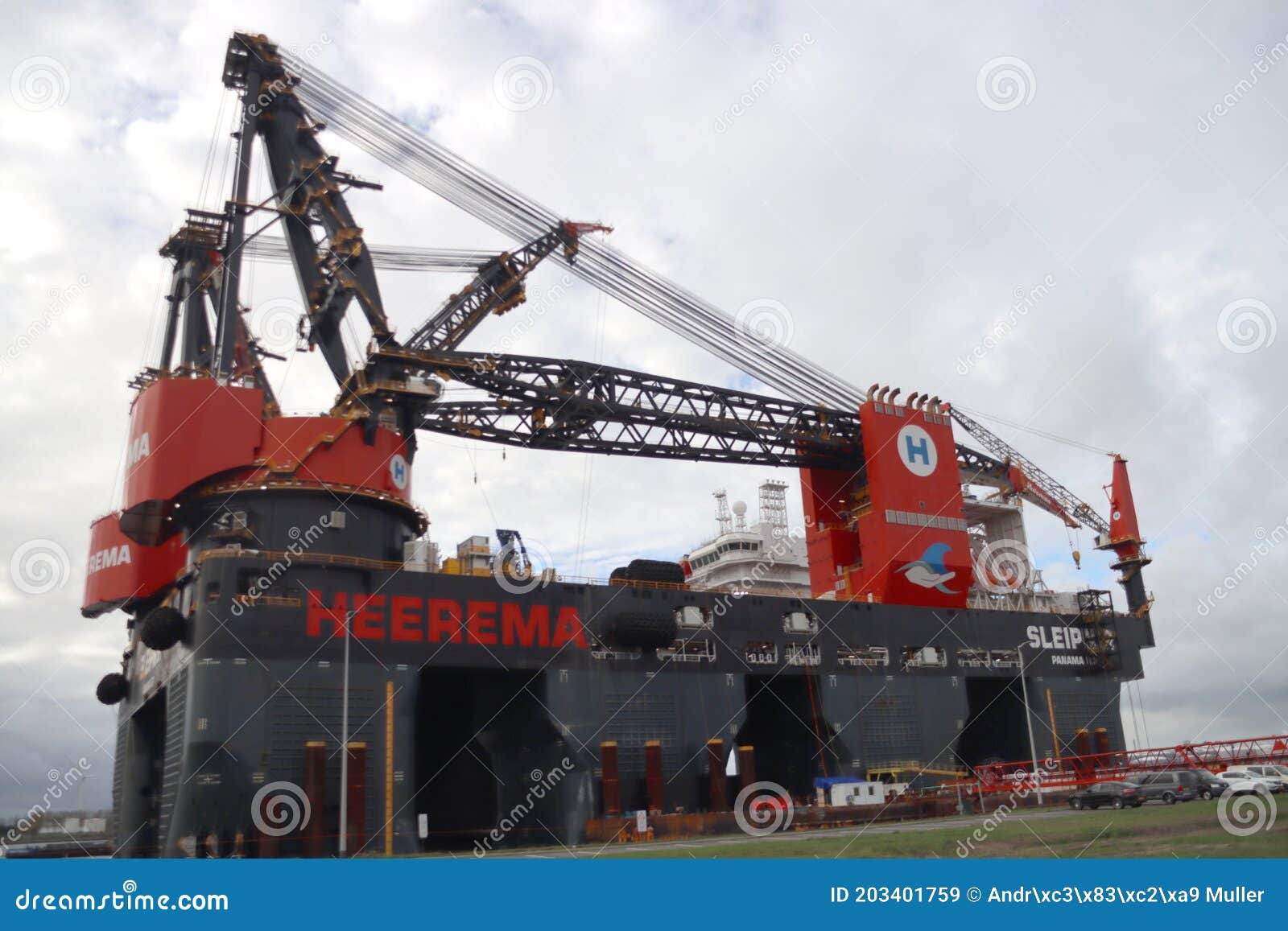
These anchors allow the ship to hold a position within a 30cm x 30cm area! During its sea trials, the SSCV Sleipnir reached a speed of 22.6km/h and it’s cruising speed is rated at 19km/h. A 12-point mooring system using 6 12 ton anchors are used to hold the ship’s position during lifting operations.

All of these propellers are underwater mountable, which means the ship does not need to be drydocked to replace its truster unit. The ship is propelled by a total of eight Wärtsilä azimuth thrusters, with four at the front and four at the end. These engines allow the SSCV Sleipnir to cross the Atlantic or remain at the station for one month. Power for the SSCV Sleipnir is provided by a 12 MAN 8l51/60DF inline eight-cylinder four-stroke engines – yes, 12 engines! These 12 engines are grouped into four different engine tooms with three engines per room. Prior to the SSCV Sleipnir the largest bearing used to tub-mounted cranes were only 12 m in diameter – so they more the DOUBLED the size of the largest bearings at the time for the SSCV Sleipner. This crane is capable of lifting or lowering 70 tons at a radius up to 12m down to 2,000m below the waterline.įun Fact: The slewing system in the SSCV Sleipnir (the system that allows cranes to rotate in their tub) uses the WORLDS LARGEST bearings at 30 m in diameter. They are also equipped with an auxiliary hoist capable of lifting 2,500 tons at a radius between 33 to 60 m and a third whip hoist which is capable of lifting 200 tons at a radius between 37 to 153m.īesides these two main cranes, the SSCV Sleipnir has a third auxiliary crane at the opposite end of the ship. These cranes each use approximately 33km of braided wire rope that’s 72 mm thick to lift. These two main cranes can be operated together to jointly lift up to 20,000 tons. The crane’s lifting capacity drops to 7,000 tons at a radius beyond this up to 62 m, and then to 4,000 tons at 82 m with a maximum operating radius using the main hoist of 102 m. Operated by Heerema Marine Contractors the vessel is equipped with two revolving cranes built by Huisman Equipment B.V., which each have a capacity of 10,000 tons at a radius between 27 to 48m with the overall boom length in 144m.


The use of pontoons also helps to reduce drag. The SSCV Sleipnir uses rounded columns that are symmetrical at the front and rear and which allows for calmer motions at seas. In common practice, SSVC’s use larger columns under the cranes to provide support, but this can lead to severe pitching when the seas get rough. This is the typical make-up of SSCVs, but what makes the SSCV Sleipnir unique is its design. The SSCV Sleipnir is made up of a large platform supported by eight columns, four on each side, and one pontoon per side. Read on more to learn a bit more about this piece of revolutionary rigging history! SSCV Sleipnir Crane Vessel Design The Vessel

The Sleipnir is a semi-submersible crane vessel (SSCV) and is the largest crane ship in the world! The SSCV Sleipnir was built in 2019 by Sembcorp Marine, and at that time surpassed the SSCV Thialif to take over the spot of largest crane ship and has continued to break records ever since.


 0 kommentar(er)
0 kommentar(er)
